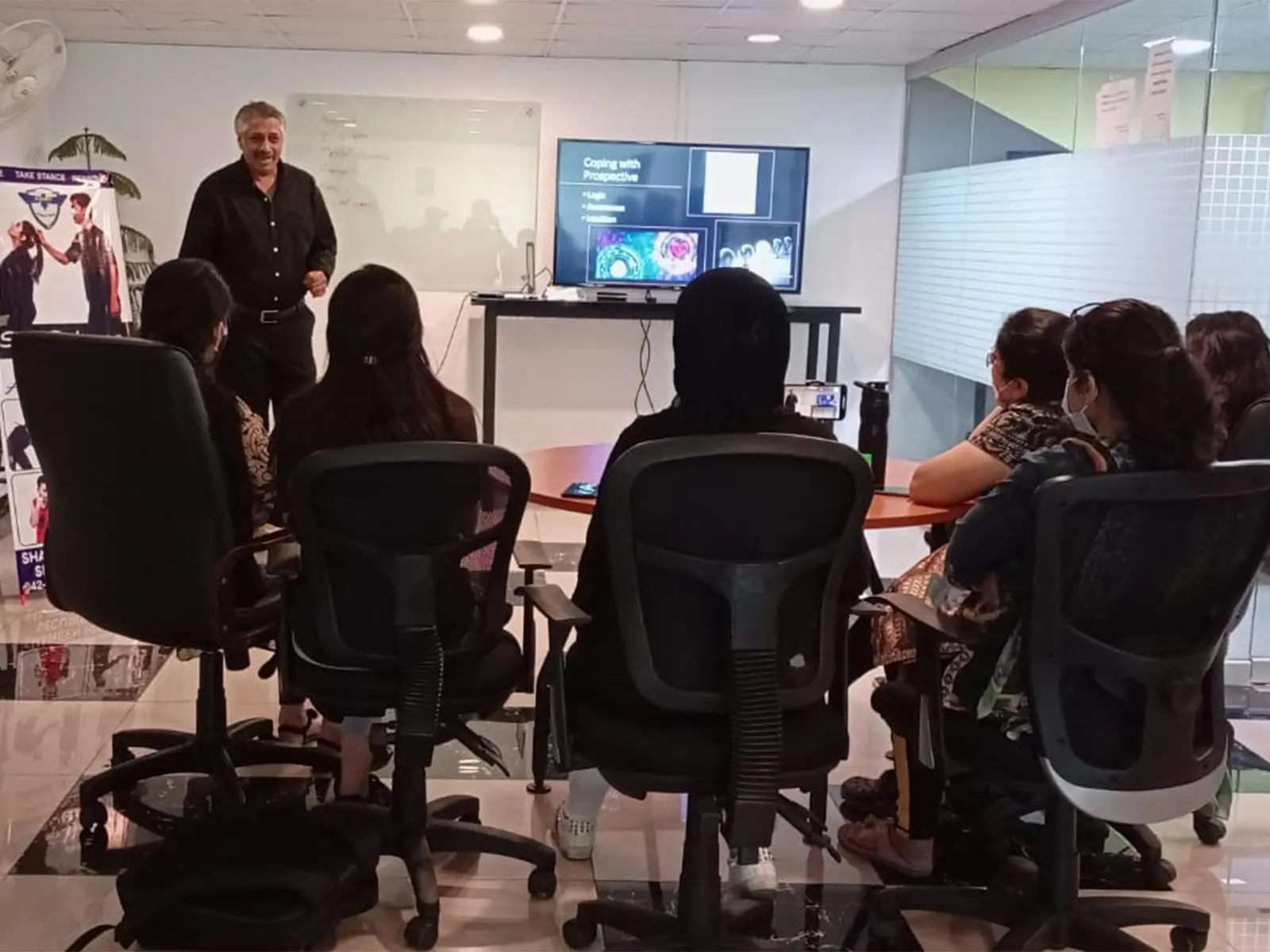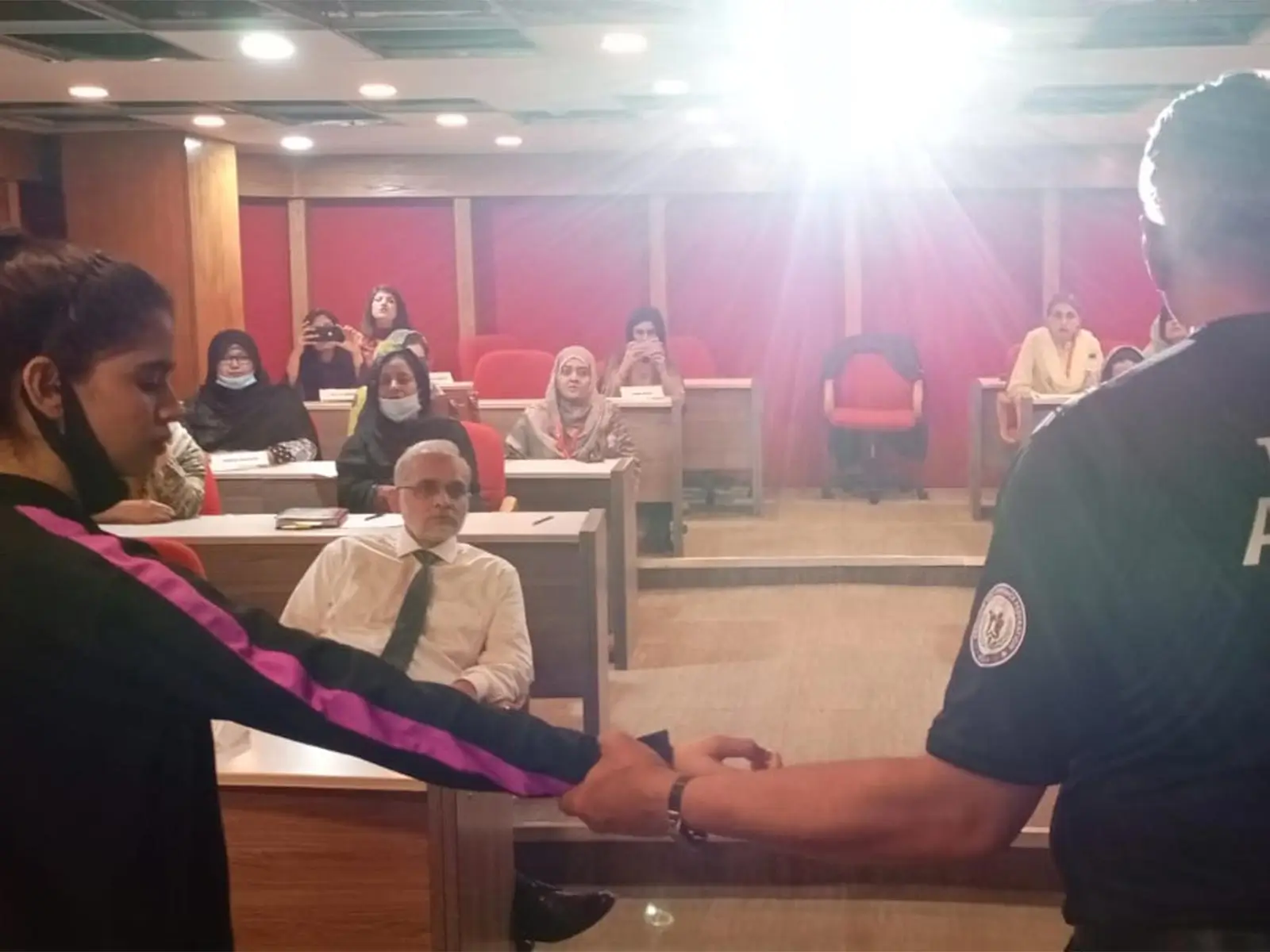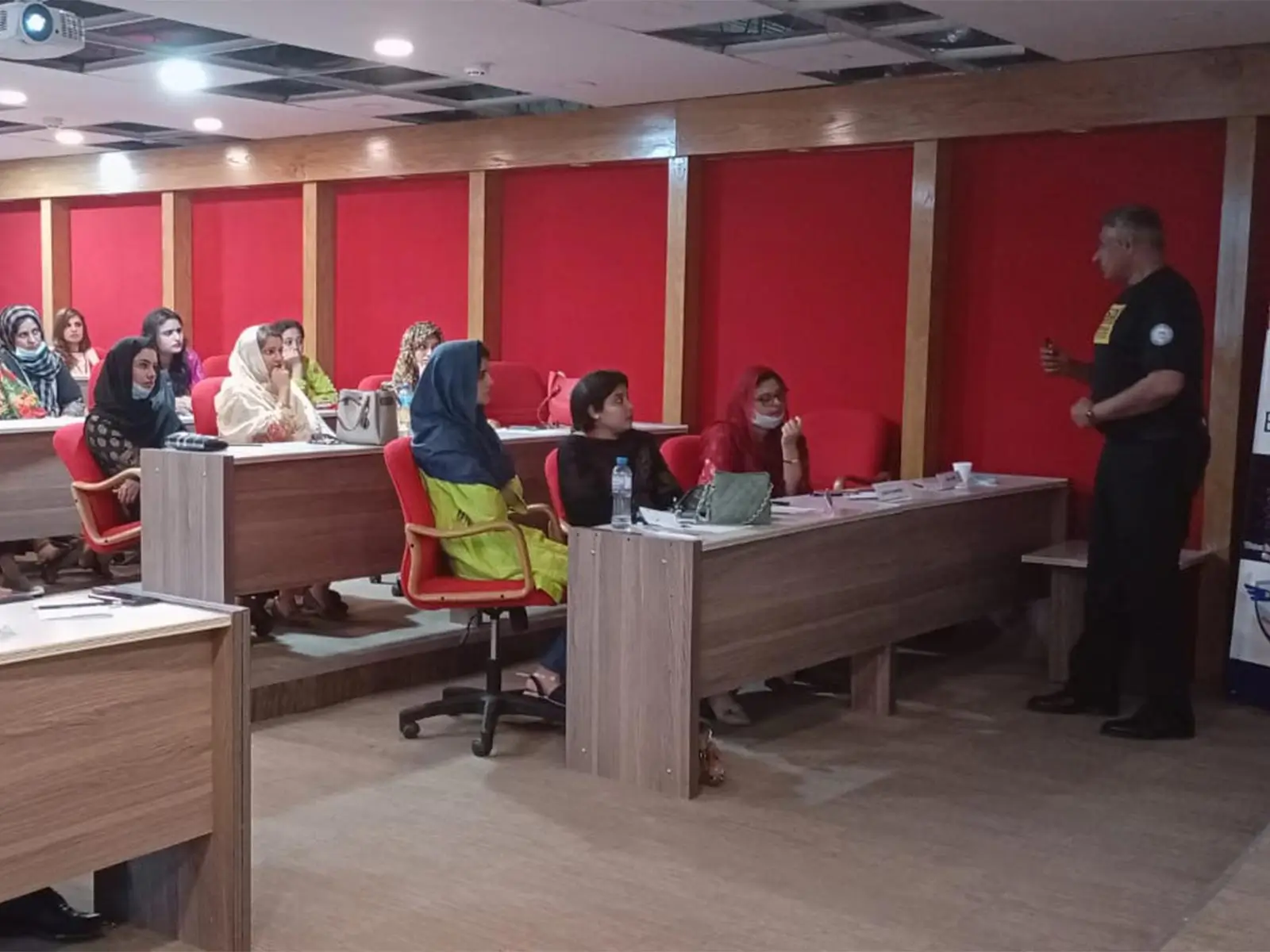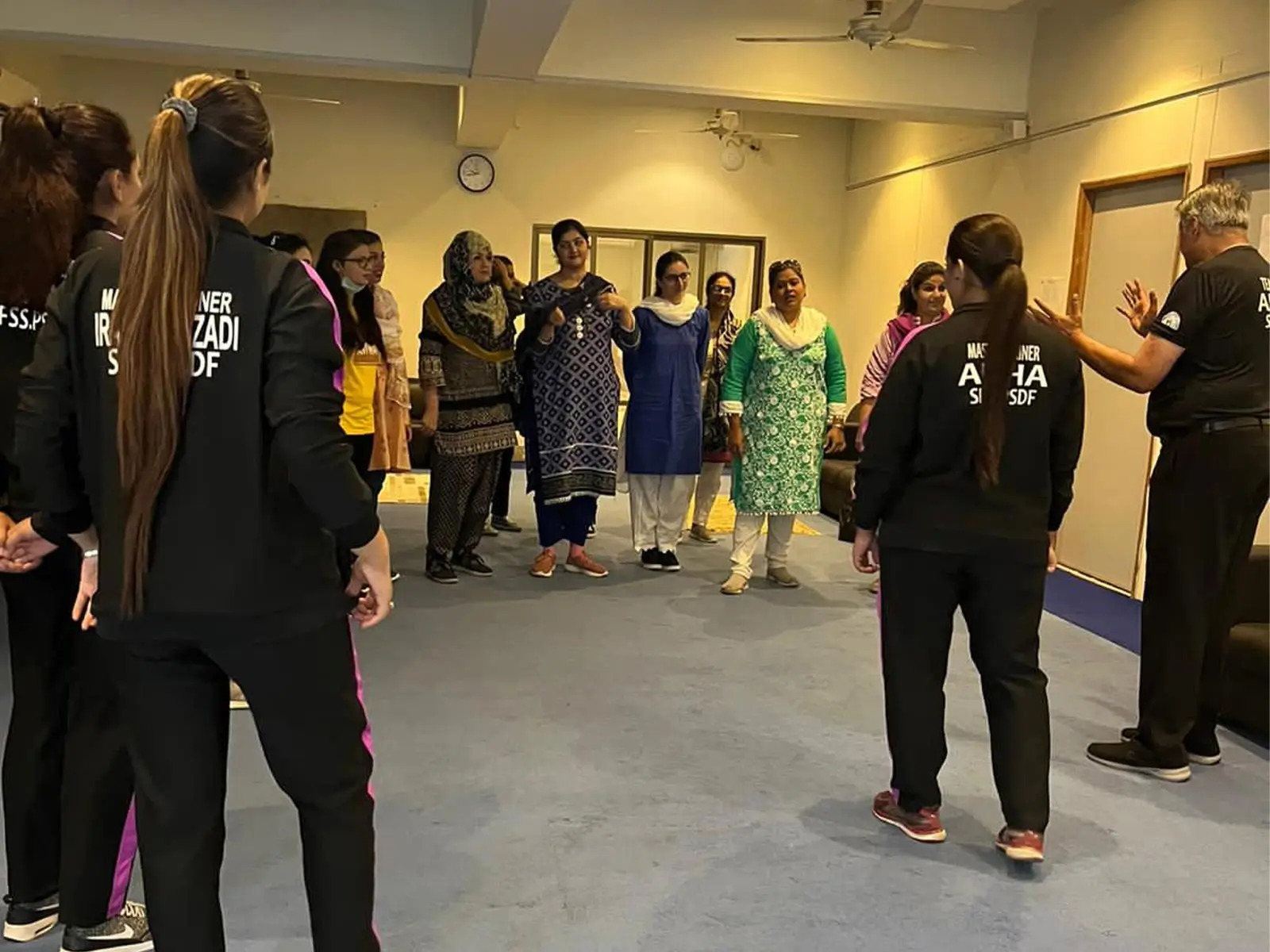
Program Overview
The high-impact 30-hour self-defense course is designed to provide participants with a well-rounded understanding of personal safety. It goes beyond just physical defense techniques, incorporating crucial knowledge about harassment and abuse phenomena, the psychological aspects of self-defense, anatomy's role in defending oneself, and the legal support available to victims. Additionally, it focuses on strategic planning to prevent harassment and abuse, and the training includes 21 practical physical self-defense techniques. This holistic approach ensures that participants are not only physically equipped to defend themselves but also mentally and strategically prepared to face real-world challenges.

Understanding Harassment and Abuse Phenomena
A critical part of self-defense is understanding the nature of the threats. The course begins with an exploration of harassment and abuse, addressing the different forms they take, including verbal, physical, emotional, and sexual abuse. Participants will learn to identify early warning signs and behaviors that could escalate into harassment or assault. This knowledge is essential for preventing dangerous situations before they arise. The course highlights the impact of societal and cultural factors on harassment, particularly focusing on the unique challenges faced by women, and how these contribute to an increased risk of abuse in certain environments.

The Role of Psychology in Self-Defense
Psychological preparedness is a key element of effective self-defense. This module helps participants understand how to manage fear, stress, and anxiety in high-pressure situations. It also explores the psychology of aggressors, helping participants recognize patterns of behavior that could lead to harassment or violence. This understanding allows individuals to anticipate threats and respond more effectively. The course also covers confidence-building exercises, focusing on mental resilience, assertiveness, and boundary-setting, which are essential for preventing and managing harassment or abusive encounters.

The Role of Anatomy in Self-Defense
Anatomy plays a significant role in effective self-defense. This module teaches participants about the most vulnerable points on the human body, such as the eyes, throat, groin, and knees, which can be targeted during self-defense. By understanding the basic mechanics of the body, participants will learn how to use their strength efficiently, even if they are physically smaller or weaker than their aggressor. The course emphasizes how to use leverage, pressure points, and body positioning to neutralize threats quickly and safely.

Legal Support for Victims
This course includes an introduction to the legal frameworks that protect victims of harassment and abuse. Participants will learn about their legal rights and the process of reporting incidents to law enforcement or relevant authorities. The module covers how to seek protective orders, the types of evidence required to support claims, and the legal remedies available to victims. Knowing this information empowers individuals to take action when necessary and helps them feel more secure in navigating the justice system if they ever face harassment or abuse.

Strategic Planning Against Harassment and Abuse
Preventing harassment and abuse requires more than just reactive measures; strategic planning plays a crucial role. This module teaches participants how to assess their surroundings, identify potential risks, and develop proactive strategies to avoid dangerous situations. This includes situational awareness, safety planning, and building personal networks of support. Participants will also learn verbal de-escalation techniques, helping them defuse potential threats before they turn violent.

Physical Self-Defense Training: 21 Techniques
The core of the course involves hands-on training in 21 self-defense techniques. These techniques are designed to be simple, effective, and easy to remember under stress. Participants will learn strikes, kicks, blocks, and escapes that target an aggressor’s vulnerable points, allowing them to incapacitate or escape from an attacker. Techniques will cover a variety of real-world scenarios, including standing confrontations, ground defense, and defense against grabs or chokes. The training is structured to ensure that participants can adapt these techniques to different situations, making them practical and versatile in everyday life.
Conclusion
This 30-hour self-defense course offers a comprehensive and high-impact learning experience that prepares participants to defend themselves physically, mentally, and legally. By addressing harassment and abuse phenomena, the psychology of self-defense, anatomy, legal support, strategic planning, and practical defense techniques, the course ensures that individuals leave equipped with the tools needed to navigate a variety of dangerous situations. This holistic approach to self-defense helps build confidence, resilience, and empowerment, ensuring participants are prepared to live safer, more secure lives.
Explore More Programs

3-Month Trainer’s Course (180 Hours)
Become a certified self-defense trainer with 180 hours of intensive training in martial arts, social resilience, and harassment prevention. Empower yourself and your community with TEVTA and NACTA certification.

1-Month Trainer’s Course (60 Hours)
Fast-track your path to becoming a self-defense instructor with this 60-hour course. Learn practical techniques to handle public harassment and empower others in just one month.

2-Day Self-Defense Intensive
Gain rapid self-defense skills in this immersive 2-day course. Learn how to recognize early warning signs, defend yourself physically, and understand your legal rights.

1-Day Intensive Self-Defense Workshop
Learn the essential skills to protect yourself in just one day. This workshop covers eight key self-defense techniques along with crucial insights into recognizing harassment, abuse, and handling high-pressure situations with confidence.

5-Hour Self-Defense Awareness Session
Boost your awareness and learn basic self-defense principles in this 5-hour session. Perfect for gaining foundational skills to recognize and respond to harassment effectively.
Register Now
Gain confidence and learn essential skills to protect yourself. Register today!
